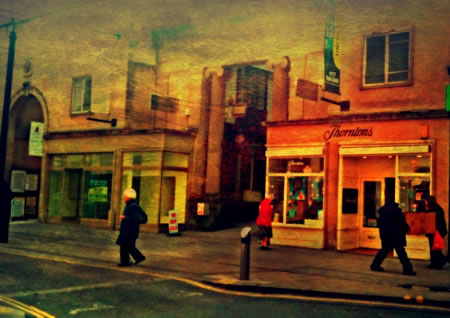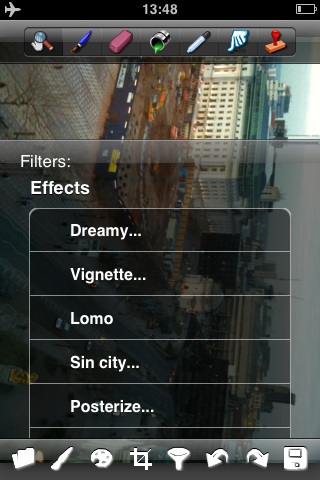PhotoForge – iPhone App of the Week

This is a regular feature of the blog looking at the various iPhone Apps available. Some of the apps will be useful for those involved in learning technologies, others will be useful in improving the way in which you work, whilst a few will be just plain fun! Some will be free, others will cost a little and one or two will be what some will think is quite expensive. Though called iPhone App of the Week, most of these apps will also work on the iPod touch.
This week’s App is PhotoForge.
PhotoForge is a highly optimized editing and painting application designed for the iPhone and iPod touch. It can be used for image manipulation, retouching, effects, and color correction, as well as a painter’s tool. It is indispensable for creating original artwork, or editing photos on your mobile device.
PhotoForge is a superb photographer’s tool, providing digital darkroom capabilities that are second to none. It is also a tool for creating incredible works of art and illustrations. PhotoForge allows you to put together an image, combining filters, brushes, and effects. They may be hand-painted, or a composite of photographic images mixed with painting. The filters and effects can be layered to produce even more dynamic results.
£1.79

There are numerous art and photographic Apps in the iTunes Store, and I have bought a fair few of them. I like to edit photographs and though I will more often then not use my Mac, when I am out in the field, to be able to edit photographs taken with the iPhone ON the iPhone then these Apps make life really easy.
PhotoForge is one of the more complicated and advanced photo manipulation Apps on the iTunes Store, with lots of features and functionality. Sometimes you want a simple App and sometimes you want something with a bit more oomph.
Take this photograph that I took in Bristol recently. It has to be said that the camera on the iPhone (even on the iPhone 3GS) is not the best cameraphone I have used, the Nokia N95 took nice photographs, whilst the Google Nexus One takes really nice photographs. Anyhow so I took this image with the iPhone and as you can see the result was not brilliant, the sun was shining into the camera by the looks of it.

So using Photoforge, doing some cropping, changing levels and adding a few FX I got to this.

Now this is something I could use to illustrate a blog article or discussion forum on the VLE. It is the ability to create content, edit photographs on the iPhone that make the iPhone such an interesting and useful device for learning. It becomes more than just a phone, it becomes a tool that enables learning to happen, as well as lots of other things too.
There are numerous adjustments, tools and filters in the App. The main constraint will be how you can use the tools expertly enough with just your finger.

I am awaiting to see how I can use similar Apps on the iPad, though of course you will need to use the iPad Camera Connection Kit to get your photographs onto the iPad, though this does mean you can use a DSLR or other digital camera instead of the iPhone camera!
There are simpler Apps in the App Store and there are free Apps that do one thing (such as the B&W filter), however I do like PhotoForge, it is a powerful image editing tool and or what it can do on such a small device as the iPhone, it is well worth the £1.79 that it costs.











